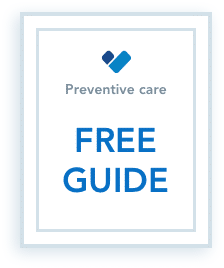Your quick guide to the 2019 Open Enrollment Period
Each year, there is an Open Enrollment Period (OEP) when almost all Americans can buy health insurance under the Affordable Care Act. The dates of the Open Enrollment Period change every year.
— Before we get started, make sure to download our FREE guide. Save to your computer and refer back to later when choosing a new plan. —
For 2019, the Open Enrollment Period is from November 1st through December 15th, 2018.
This gives you just 6 weeks to choose a plan and get covered in most states. Although, some states have extended their Open Enrollment Period. This means that anyone living in these states will have extra time to enroll.
Extended time for specific states:
- California: October 15, 2018–January 15, 2019
- Colorado: November 1, 2018–January 15, 2019
- Massachusetts: November 1, 2018–January 23, 2019
- Minnesota: November 1, 2018–January 13, 2019
- New York: November 1, 2018–January 31, 2019
- Rhode Island: November 1, 2018–December 31, 2018
- Washington D.C.: November 1, 2018–January 31, 2019
Who is eligible to enroll in health insurance during OEP?
Almost everyone in the United States can enroll in health insurance under the Affordable Care Act during the Open Enrollment Period.
However, there are a few restrictions:
- You need to live in the United States.
- You need to be a U.S. citizen or national.
- If you are in prison, you cannot enroll.
- If you already have Medicare coverage, you cannot enroll.
- You cannot enroll if you already have access to affordable health insurance through your employer or your spouse’s employer.
Apart from these few rules, all Americans have access to affordable insurance plans through the Marketplace. Plus, you can’t be refused coverage because of pre-existing conditions, because of your salary, or for any other reason not listed above.
When does my health insurance coverage begin?
Almost everyone who enrolls during OEP will have insurance coverage beginning on January 1st, 2019. That coverage will continue until December 31st, 2019, as long as payments are made.
Remember that list of states with extended deadlines? If you enroll after December 15th, the date your coverage starts will be different:
- If you enroll by January 15th*, your plan will kick in on February 1st
- Or if you enroll between Jan 16th-31st, your plan will kick in on March 1st
What do I need when I’m ready to enroll?
You’ll need to have some information on hand to get started.
First, you’ll need some basic information on the people living in your household. You’ll also want to know your household size (which includes anyone you claim on your tax return). Plus, you’ll need the following information for each of those people:
- Birthdate
- Address
- Social Security Number
If anyone in your household is a Permanent Resident, you’ll need their Resident Alien number or A-number ready. Usually, you’ll just need to type in the number. However, you may have to upload the document, so you should have it ready to scan as well.
There are quite a few other immigration statuses that are eligible to enroll in health insurance under the Affordable Care Act. Find out what required documents are needed here.
Besides the information you’ll need for members of your household, you’ll also want to gather:
- Your household income for 2019, or your best estimate
- Information on how you file your taxes – jointly with your spouse, or separately
- Income and employer information for your household
- Policy numbers from any current health insurance plans
What if I already have a plan from last year?
If you had Marketplace health insurance in 2018, you will be automatically re-enrolled for next year. Although that sounds good, it may not be your best option. If you don’t shop and compare health coverage, you may end up seeing your health payments increase. People who don’t switch plans oftentimes see their monthly premiums increasing, their prescriptions may no longer be covered, and their doctors might no longer accept their plan. Not only do lifestyles and needs change each year, so do health insurance plans. Find out if you are eligible for a subsidy or find coverage that is a better fit for your needs. Take the time to shop and compare now so you don’t end up paying more later.
What about subsidies?
Many Americans are eligible to save on their health insurance costs. These savings can help reduce insurance premiums and out-of-pocket costs.
Let’s look at the two kinds of assistance available:
First, there are Advanced Tax Premiums which help reduce the cost of your monthly premium. This applies to anyone whose income falls between 100% and 400% of the federal poverty level.
For example, the current federal poverty limit for a family of four is $28,290. If you claim four people on your taxes, and you earn between $28,290 and $113,160 per year, there is a good chance you will be eligible for assistance.
There are also Cost Sharing Reductions (CSR). These reductions help people who earn between 100% and 250% of the federal poverty limit and reduce out-of-pocket costs like copays and deductibles.
It’s also important to know, if you’re married and do not file your taxes jointly with your spouse, you will pay full price for insurance.
How do I sign up?
If you have any questions before Open Enrollment begins or would like assistance choosing a plan, call our Consumer Advocate team anytime at (855) 772-2663. Gather the information listed in this quick guide, and we’ll help you find your way through the process.
—
Keep checking back, we’ll continue to update this post as state information becomes available. To make things a little easier, we also created a FREE resource guide that you can refer back to when shopping for health coverage.















Leave a Comment